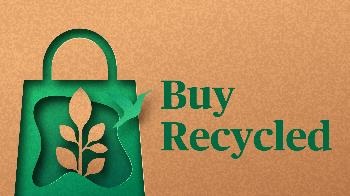Did you know the average American generates about 4.5 pounds of trash per day? That totals more than 1.6 tons per person in a year or the equivalent weight of one mid-sized SUV.
Stop Junk Mail
Each year over 1 billion pounds of junk mail get delivered to mailboxes across America, and most of it ends up in landfills. While recycling junk mail is far better than tossing it in the garbage, preventing the creation of all that wasted paper in the first place can save millions of trees. Below are some easy ways to reduce the constant flow of unwanted mail to your mailbox.
To remove your name for mailing lists and opt-out of receiving unwanted, such as catalogs and promotional offers:
To stop credit card offers from major credit bureaus:
Learn more about stopping unwanted mail visit ftc.gov.
 Buying recycled-content products benefits our environment by protecting natural resources, saving energy, and reducing pollution. Choosing to purchase products made with recycled content is essential to “closing the recycling loop.” Buying recycled maintains market demand and competition for recyclables, thus helping to ensure the continuation of recycling programs.
Buying recycled-content products benefits our environment by protecting natural resources, saving energy, and reducing pollution. Choosing to purchase products made with recycled content is essential to “closing the recycling loop.” Buying recycled maintains market demand and competition for recyclables, thus helping to ensure the continuation of recycling programs.
Recycled-content products are widely available at competitive prices. Most grocery stores carry paper products, such as paper towels, toilet paper, and paper plates, made from recycled materials. Other vendors may feature “Green” product options in different store sections, or you can search online specifically for recycled-content products. Office supply outlets will have copy paper, envelopes, and other supplies made of recycled materials. Generally, recycled content products are no more expensive than traditional items, and in many cases, recycled content products are less expensive. Construction materials such as deck boards and carpeting made from recycled materials are also widely available.
Any myth that recycled-content products are of lesser quality is entirely false. Manufacturing advancements make recycled-content products in every way equal to the quality of their non-recycled (virgin material) counterparts. So, help protect our environment and make the switch to buying recycled-content products.